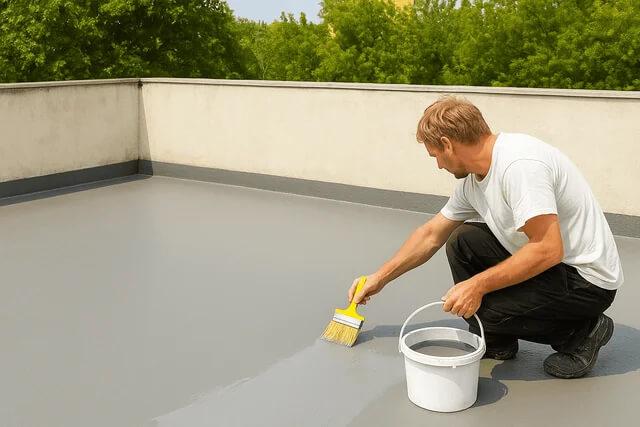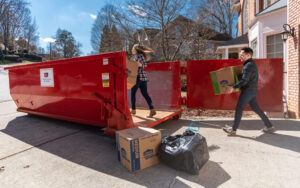
A wet basement can cause structural damage, mold growth, and significant financial loss. Proper Basement waterproofing is a critical step for every homeowner to maintain a safe and healthy living environment. With water intrusion being one of the leading causes of home damage, investing in effective waterproofing solutions ensures long-term protection and peace of mind.
This article explores the essential steps for basement waterproofing, common methods, benefits, costs, and tips to safeguard your home from water-related damage.
Why Basement Waterproofing is Important
Basements are prone to water intrusion due to their location below ground level. Water can enter through foundation cracks, seepage, or poor drainage, leading to:
- Structural Damage: Constant moisture can weaken walls, floors, and the foundation.
- Health Risks: Damp basements promote mold and mildew, which can trigger respiratory issues and allergies.
- Property Damage: Furniture, electronics, and personal items stored in the basement are at risk.
- Reduced Property Value: Water-damaged basements can negatively affect resale potential.
Implementing proper waterproofing techniques protects your home’s structural integrity, improves indoor air quality, and preserves valuable belongings.
Key Steps in Basement Waterproofing
Effective basement waterproofing requires a combination of interior and exterior solutions tailored to the home’s specific conditions.
1. Assess the Source of Water
Identifying the source of moisture is the first step. Common sources include:
- Surface water from rainfall
- Groundwater seepage
- Plumbing leaks
- Condensation on basement walls and floors
Professional inspection helps determine the root cause and the most suitable waterproofing approach.
2. Exterior Waterproofing
Exterior waterproofing involves excavating around the foundation and applying waterproof membranes to prevent water from entering. This includes:
- Foundation Coating: Protective layers on walls to block water penetration.
- Drainage Systems: French drains or exterior drainage pipes redirect water away from the foundation.
- Proper Grading: Landscaping slopes that direct water away from the home.
Exterior solutions are highly effective but may require higher upfront investment.
3. Interior Waterproofing
Interior methods focus on managing water that enters the basement:
- Sump Pumps: Remove accumulated water automatically.
- Interior Drainage Systems: Channels installed along basement walls collect water and redirect it to a sump pump.
- Waterproof Coatings: Sealants applied to walls and floors to prevent seepage.
Interior waterproofing is particularly useful for existing homes where exterior excavation may be challenging.
4. Foundation Crack Repairs
Cracks in walls or floors allow water to seep in. Common repair methods include:
- Epoxy Injection: Fills structural cracks and strengthens the foundation.
- Polyurethane Foam: Expands to seal leaks and prevent further water intrusion.
Repairing cracks before applying waterproofing solutions ensures maximum protection.
5. Moisture Control and Ventilation
Proper ventilation reduces condensation and maintains a dry environment:
- Dehumidifiers: Control humidity levels and prevent mold growth.
- Air Vents and Fans: Promote airflow to keep basement areas dry.
Combining moisture control with waterproofing techniques enhances effectiveness.
Benefits of Basement Waterproofing
- Structural Protection: Prevents wall and floor damage from water pressure.
- Health Safety: Reduces the risk of mold, mildew, and allergens.
- Property Preservation: Protects furniture, electronics, and stored items.
- Increased Usable Space: Enables conversion of the basement into functional living areas.
- Long-Term Cost Savings: Avoids expensive repairs from water damage and mold remediation.
According to the National Association of Home Builders, homes with waterproofed basements are more resilient against flooding and structural issues, adding long-term value.
Signs You Need Basement Waterproofing
Recognizing early warning signs can prevent extensive damage:
- Water stains or discoloration on walls
- Musty odors or visible mold
- White, powdery residue (efflorescence)
- Foundation cracks
- Persistent dampness or condensation
Timely intervention can save thousands of rupees in repair costs and protect your home’s integrity.
Choosing the Right Basement Waterproofing Service
Selecting a professional service ensures high-quality work and long-term effectiveness. Consider these factors:
- Experience: Providers with years of expertise in basement waterproofing are more reliable.
- Service Range: Look for comprehensive solutions, including interior and exterior waterproofing.
- Certifications: Ensure compliance with local building codes and use of quality materials.
- Customer Reviews: Check client feedback for service quality and reliability.
- Warranty and Support: Ensure coverage for materials and workmanship, along with maintenance services.
Professional guidance ensures that the waterproofing method aligns with your home’s specific needs.
Cost Considerations
Basement waterproofing costs vary depending on methods, home size, and severity of leaks:
- Interior waterproofing: ₹3–7 lakhs
- Exterior waterproofing: ₹7–15 lakhs
- Crack repairs and sealants: ₹1–3 lakhs
While costs may seem high, they are far lower than repairing structural damage or replacing water-damaged belongings.
Tips for Effective Basement Waterproofing
- Conduct a professional inspection before starting.
- Combine interior and exterior methods for comprehensive protection.
- Regularly clean gutters and ensure proper landscaping grading.
- Invest in high-quality waterproofing materials and technologies.
- Schedule periodic maintenance to ensure long-term effectiveness.
Implementing these tips enhances protection and ensures a dry and safe basement year-round.
Conclusion: Protect Your Home with Basement Waterproofing
Investing in professional Basement waterproofing is essential for safeguarding your home from water damage, mold growth, and structural issues. By assessing water sources, repairing foundation cracks, and combining interior and exterior solutions, homeowners can ensure a dry, secure, and valuable basement.
Proper waterproofing not only preserves property value and enhances health safety but also creates additional usable space for families. Choosing experienced professionals and implementing best practices makes your home resilient against water intrusion, offering peace of mind and long-term protection.


